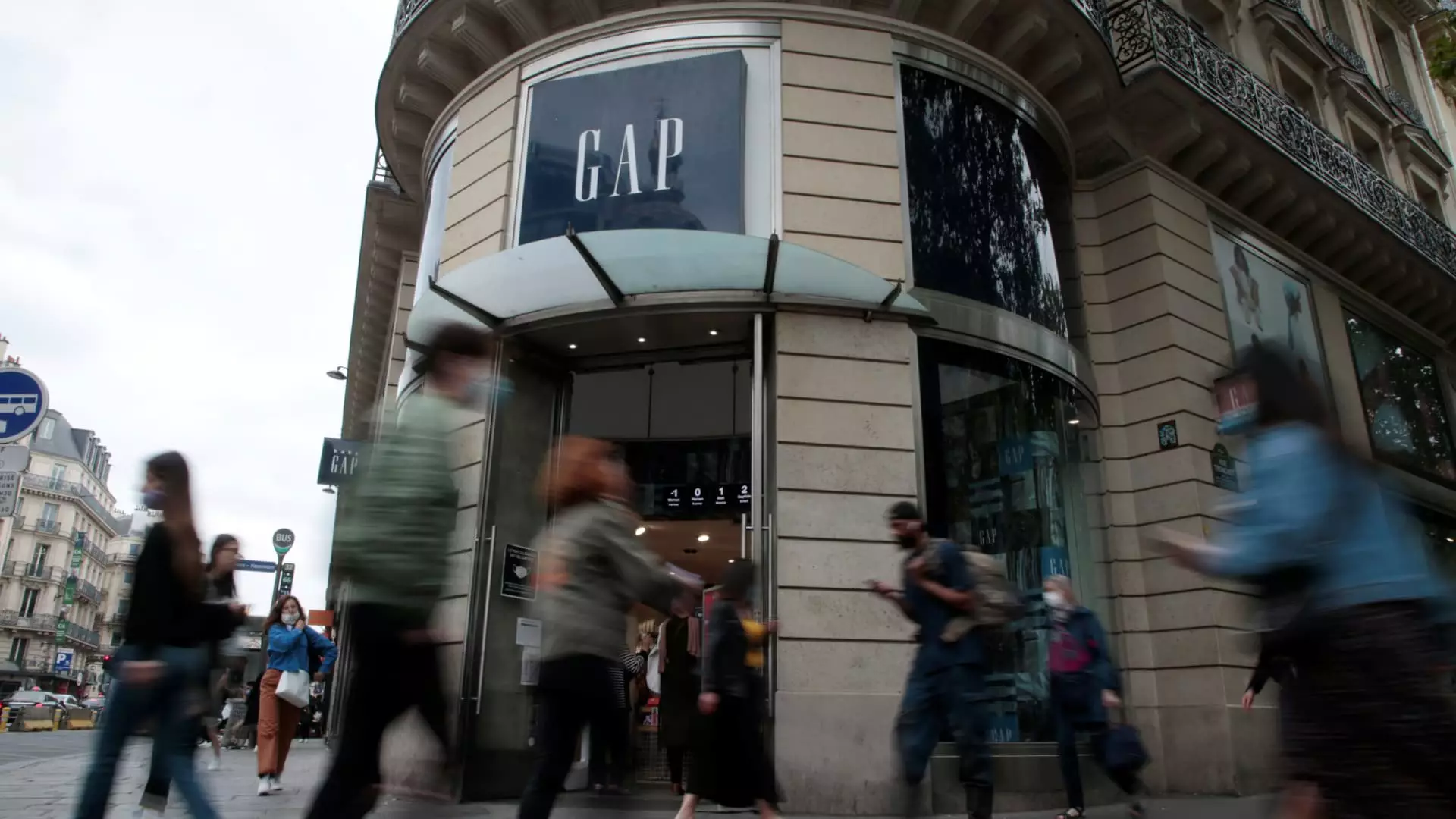The ramifications of U.S. trade policy ripple across industries and threaten to dismantle business models that have taken years to build. Gap, Inc. recently reported that potential new tariffs on imported goods could cost the company an estimated $250 million to $300 million. This figure is staggering, especially for a company struggling to reclaim its position in the competitive apparel market. The introduction of punitive duties—30% on imports from China and 10% on those from most other countries—forced the retailer to rethink its supply chain strategy. While executives claim to have mitigated these costs by half, the impact remains severe and palpable.
In an environment already fraught with uncertainty, Gap’s unforeseen vulnerability is alarming. The company’s shares plummeted more than 15% in after-hours trading immediately following the announcement of its fiscal first-quarter earnings, underlining investor apprehension. This sends a clear signal that companies are susceptible to the disarray prompted by political decisions, and Gap is no exception to that unwelcome truth.
An Insufficient Corporate Response
Richard Dickson, Gap’s CEO, needs to brace for more than just economic headwinds; he must contend with an unraveling legacy. Despite optimistic claims of strong brand resilience, the reality is that the company’s dependence on international suppliers, particularly in countries facing punitive tariffs, will severely limit its ability to navigate this tumultuous landscape. The decision to diversify sourcing away from China seems prudent, but what about the implications of rising tariffs from Vietnam, its largest trading partner? If a 46% tariff is imposed, it could spell disaster for Gap’s operations.
Adopting a more assertive supply chain diversification strategy is not merely a choice; it’s a necessity. Yet, the genuine question remains: can Gap pivot effectively before adverse financial impacts manifest? Dickson’s assurances that “strong brands can win in any market” feel more like wishful thinking than actionable insight. Companies may survive political challenges but are they thriving? In this scenario, talk of brand strength is nothing but a weak shield against the economic barrage unleashed by government intervention.
Performance Paradox
Despite the political climate, Gap achieved quarterly earnings that surpassed expectations, suggesting some resilience through targeted marketing and operational adjustments. The company reported net income of $193 million—up from $158 million a year ago—along with revenues slightly exceeding forecasts. But do these figures truly reflect a rejuvenation of the Gap brand? The 2% rise in comparable sales may be glossing over the cracks forming beneath the surface.
Old Navy, Gap’s largest brand, showed promising results with a 3% increase in sales. The key to this success could very well lie in its marketing campaigns. However, the reality of the company’s profitability is muddied by flat growth in Banana Republic and a dismal decline of 6% in sales for Athleta. The latter brand’s failure to capture its intended demographic signals a marketing and product alignment issue that could further erode customer loyalty. Gap’s apparent success may be an illusion built on skeletal remains, and it raises the question—how long can a company maintain facade support without addressing core deficiencies?
Key Challenges Awaiting Mitigation
Going forward, Gap’s guidance appears cautiously optimistic, anticipating only modest sales growth of 1% to 2%, hardly the numbers to inspire confidence in investors. Moreover, the projected gross margin falling short of Wall Street’s expectations poses additional challenges. By forecasting stagnant sales for the next quarter, Gap is effectively revealing its vulnerability to external threats—an open invitation for further scrutiny.
With the once-beloved Banana Republic in turmoil and Athleta struggling to reclaim its relevance, it is crystal clear that Gap has significant work to do. The complications brought on by tariffs are not simply transactional costs; they pose existential risks to a brand trying to navigate through a complicated economic and political landscape.
As climate instability grows due to continual government interference, companies like Gap must adapt swiftly. The road ahead requires a robust strategy that not only addresses tariffs but also revitalizes their brand identity and aligns marketing with consumer expectations. Without such decisive actions, Gap risks becoming another cautionary tale—a relic of an era unable to adapt to the modern-day demands of global commerce.

